Kill Screen Magazine's Blog, page 248
July 28, 2015
This smartphone game exposes the human cost of recycling e-waste
One day, your mobile phone, that precious device that connects you with the outside world and on which you may even be reading this sentence, will die. Its death may come in the middle of the night after years of declining performance. It is also possible that your phone will suddenly pass away after inadvertently falling into a lake. Either way, from a consumer electronics perspective, the phone has now run its race. Its journey is over. But that isn’t true. In fact, your phone’s journey has only begun.
Burn the Boards, which has just come out on iOS to complement an earlier Android release, is a game about what happens after you ditch your phone. The technical term for this sort of thing is e-waste. Various components in abandoned electronic goods can be salvaged, reused, or recycled. Harvesting these parts, however, often results in exposure to a variety of foul substances, which is to say nothing of large-scale pollution that is caused by the clumsy and negligent recycling of e-waste. As such, e-waste is less of a technical problem than it is a human one: The handling of these items exposes informal workers to considerable risks. Burn the Boards focuses on these human costs.
E-waste is less of a technical problem than it is a human one
You play as Arun, “a villager who came to the big city with his wife and child to try his luck.” In this case, luck means trying to scrape together a living at an e-waste recycling facility. The boards that have to be recycled are puzzles. Try to remove all the non-toxic parts and try to do it quickly because your daily wage depends on speed. As the day passes, your health level declines. At night, you return home to challenges and expenses. Can you afford to fix the roof? Can you afford to eat? Can you afford to eat more than a small meal? Can you afford not to eat and pass out at work? There are no great choices here. Burn the Boards is a well-designed game, but it is a game about an environment where the odds are overwhelmingly stacked against you.
The documentation for Burn the Boards indicates that winning is possible. I can’t confirm that fact, but I’m bad at puzzles. Anyhow, Causa Creations writes: “The game can be only be won by hard work: after a particular sum is reached, Arun can afford to retire from his recycling job and look for healthier opportunities.” Games need winners. But winning is somewhat antithetical to the point Burn the Boards seems to be making. The possible ways Arun can die or lose everything and wind up back in his village are far more numerous and more interesting. These, after all, are the material and human costs of a broken system for recycling e-waste. The mechanics of Burn the Boards may suggest that one can win out with hard work, but the real world is not that facile. The hard work of laborers will not singlehandedly solve the problem Burn the Boards aims to document.
Making Wearables from E-wasteMeet Cyrus Kabiru, a Kenyan artist turning e-waste into wearables and art. From video journalist Simon Mukali in Kenya.
Posted by AJ+ on Monday, 13 July 2015
What is to be done? Causa Creations is partnering with German NGA Action for World Solidarity and will be using half of the revenues from its game to support migrant workers in India. That’s a start, but unlikely to produce lasting change on its own. Indeed, the bulk of Burn the Boards’ value comes from raising awareness, not money. The game is not the sole artistic project to take on the recycling of e-waste. The Kenyan visual artist Cyrus Kabiru has been turning items found on the street of Nairobi into elaborate, somewhat wearable sculptures. His work, like that of Causa Creations, can do some good, but there are ultimately bigger forces at play. So long as electronics contain potential pollutants, used phones need to be recycled, and citizens suffer from a lack of protections, the suffering that Burn the Boards depicts will remain a horrifying reality.
You can download Burn The Boards for free on the App Store and Google Play.
Mr. Robot might be the best sci-fi show on television
Mr. Robot is a timely, acerbic show. You should be watching it
Feast your eyes on the lovely low-poly art of Traces of Light
"She belonged to a different age, but being so entire, so complete, would always stand up on the horizon, stone-white, eminent, like a lighthouse marking some past stage on this adventurous, long, long voyage, this interminable—this interminable life." - Virginia Woolf, Mrs. Dalloway
Sometimes, a videogame's art style makes you sigh like you're a Disney princess with a serious crush. Traces of Light, a 3D maze game, is exactly that kind of beautiful. Created by German designer Mikhail Pigichka, the game's style was born out of some experiments with 3D tools where the main idea was to "colorize the whole scene by different points of light and different materials." The result speaks for itself, each screenshot coming alive with an electric undercurrent, while also maintaining a distinctly naturalistic look.
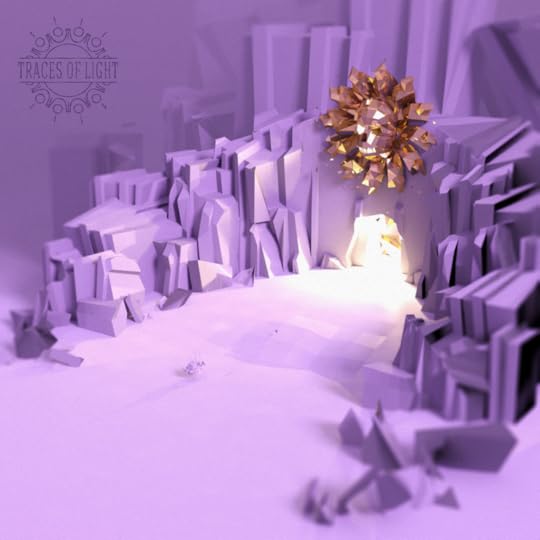
While we don't know much about Traces of Light, we know it's a third-person puzzler about a lighthouse keeper named Dirk Young. After a devastating solar storm ruins his village, Dirk must find a path to his lighthouse in order to save his friends and family.
the cherry on top of this delicious eye-feast
As the player, it's up to you to help Dirk overcome the obstacles thrust in his path, by running, jumping, climbing, and flying your way to his noble goal. The trail you forge leaves an illuminated pathway in your wake, a "trace of light" (get it?) to mark your journey.
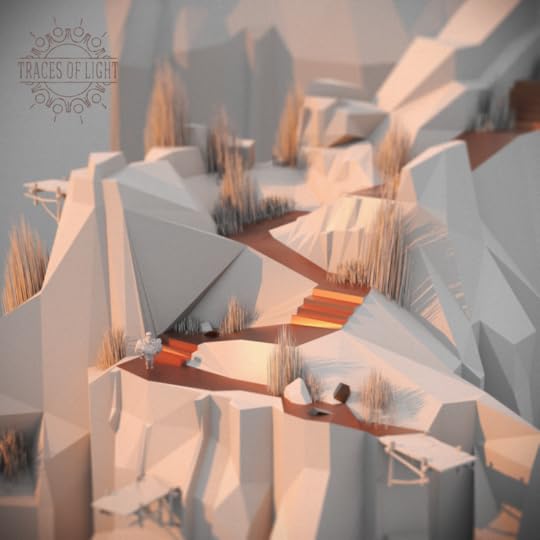
The crispness of the concept art makes Trace of Light look touchable, like a magical world built from folded papers and dreams. Each different location boasts a dynamic weather system with day and night cycles, which means a lot more jaw-dropping experiments with low-poly lighting colorations. As the cherry on top of this delicious eye-feast, everytime the player reaches their goal, they have the choice to skydive out of the lighthouse and "enjoy the panorama view of the island." Get your F keyboard buttons ready, ladies and gentlemen, because it's screenshot season.
There's no information on a possible release date, but the devs are hard at work on making a new playable demo for the upcoming Hamburg DevGAMM conference in September. You can go to Trace of Light's official website for more information.
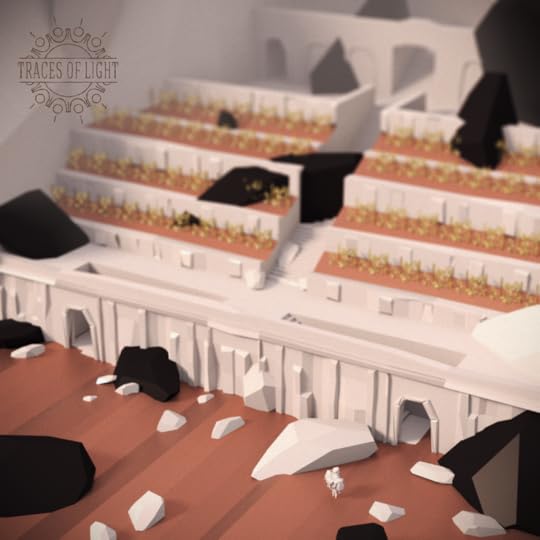
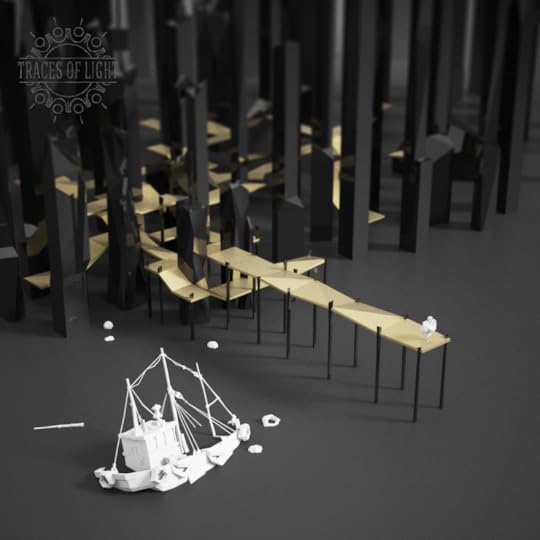
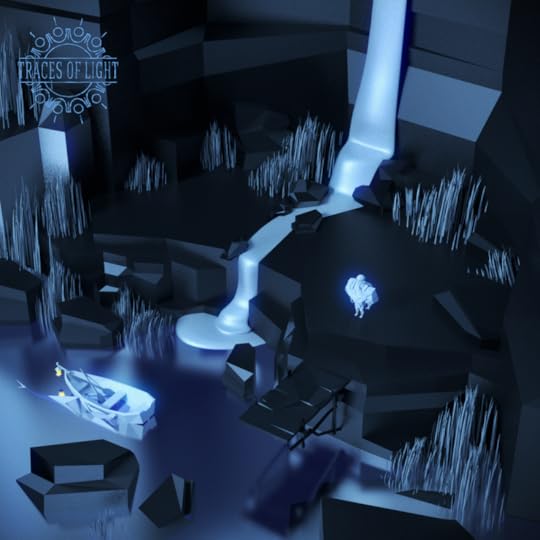
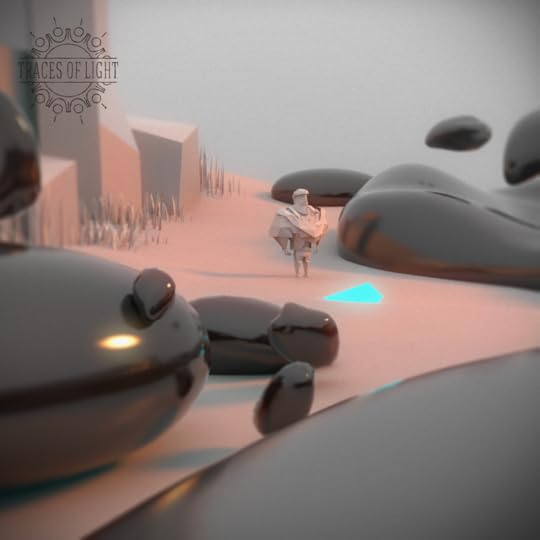
The Magic Circle is a damning indictment of modern game design
The Magic Circle is a pain in the ass by design.
July 24, 2015
You might be playing god in Crest but most of your people don't care
Spider: Rite of the Shrouded Moon will update Gothic castles for the videogame age
Spider: Rite of the Shrouded Moon has a title that would probably be accepted as part of the Castlevania series (which includes Legacy of Darkness, Circle of the Moon, and Curse of Darkness for starters). This is probably not a mistake. Consider that Rite of the Shrouded Moon, as often with Castlevania, is about navigating and surviving a mysterious Gothic abode. Instead of Dracula's castle, it is the Blackbird Estate that you explore, it said to contain equal parts insanity, secret passages, and coded messages.
a mansion that feels alive
Vital to setting the tone in and around the enormous stony-walled houses in these games is the weather. When you think of Dracula's castle you probably see dark, swirling storm clouds and forked lightning. It's an archetypal signifier for the home of evil that is rooted in the settings of Gothic fiction. Storms and lightning are often used as it's a destructive type of weather that clashes and erodes the castles, which are usually exposed atop clifftops or sat next to roaring coasts like stone-backed giants, aged by the years. This placement and the surrounding weather is both a geographic and meteoric symbol of the metaphorical battle against nature these structures represent in housing their unholy occupants.
Castlevania has constantly drawn upon this classic imagery, with even the front cover for the original NES game pitching the castle against a midnight sky on a cliff, a crescent moon next to it being sliced by thin black clouds. This investment in this imagery hit its peak in Castlevania: Symphony of the Night, in which one of the directors took far longer than he probably should have coding one of the game's areas so that, every time you entered, there was a chance for a different weather type: fog, heavy rain, thunder and lightning.
This is a little-known fact that the game's most famous director, Koji Igarashi, revealed during Double Fine's "Devs Play" series (find it at 01:21:00 in this video). It might be an insignificant part of the game's code overall yet the care that was put into it shows the importance of the weather to the series (especially Symphony of the Night) and its grotesque architecture.
a new level of interactivity
Tiger Style, the two-person team creating Spider: Rite of the Shrouded Moon, is taking the relationship between the gothic castle and the weather outside even further. It's not just one of the complementing flavors in the baroque stew, but whether it's raining or sunny affects what secrets in the Blackbird Estate are available to you. And Tiger Style has built a system that is able to track what the weather outside your window is (presumably through the internet) and have that matched to the weather inside the game. It's also aware of your local time it and alters the position of the in-game sun and moon accordingly.
This means that to fully explore all of the nooks inside the estate you'll need to return to it at different times of day and in different weathers. The idea is to create a mansion that feels alive, revealing only parts of itself to you at a time, recquiring a map that spans time as well as space to navigate fully. This type of design is, again, typical of Gothic fiction.
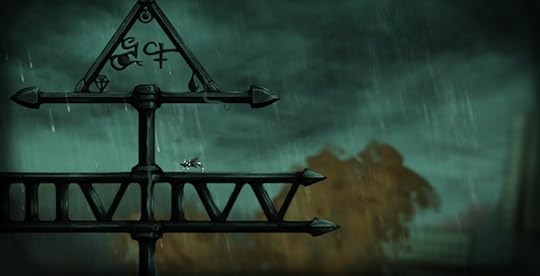
As Audron�� Raškauskien�� writes in Gothic Fiction: The Beginnings, the castle in the typical Gothic novel is made out to be alive with a power that perplexes those who enter. This is reflected in its irregular shape and the complexity of its layout, which may or may not be due to an actual distortion beyond reality. She also cites Manuel Aguirre on the topic, who says "this basic distortion yields mystery, precludes human control and endows the building with a power beyond its strictly physical structure: the irregular mysterious house is, like the vampire, a product of the vitalistic conception of nature."
Spider: Rite of the Shrouded Moon easily slips into a tradition of Gothic manors. But it takes the concept to a new level of interactivity (and perhaps immersion) by having the Blackbird Estate be affected by your local climate. This, in itself, is remarkable, but it's also an appropriate blend of reality and fiction similar to the distortion that Aguirre finds inside the Gothic castle, granting it power over our fear and fascination.
Spider: Rite of the Shrouded Moon will be out on August 6th for PC and iOS. It will be heading to Android, PlayStation 4, and PlayStation Vita after that. Find out more about it on its website.
Donald Trump's board game contains everything there is to know about Donald Trump
Top Trump.
Virtual Light: Exploring In-Game Photography And Photo History
How to have a conversation about in-game photography and not be an idiot about it.
An eating disorder support group gives women in games more "realistic" body shapes
It's no secret that media's treatment of female bodies is all around terrible. But for videogames and other animated media, the idealizing of women's bodies presents some uniquely awkward issues (have you seen the breast physics?) For example: according to the 2013 Game Developer Magazine survey, only 16% of gaming's artists are female. That means 84% of the people creating the female bodies you see in videogames have absolutely no concept of what it means to live inside a female body. It's no surprise, then, that many of their depictions result in tone deaf designs that not only perpetuate unattainable beauty ideals, but also seem confused about the fact that women are of the human species.

As the online eating disorder support group Bulimia.com puts it, "video game designers and their companies have complete control over the female bodies in their games. So why is it they so often opt to make these characters into unrealistically idealized versions of their human counterparts?" Of course there are many possible answers to that question—industry standards, unconscious biases, the tired conviction that "sex sells"—but each is as unsatisfactory as the last.
The support group goes on to call out the industry on its contradictory aesthetics, noting that "gaming studios boast hyper-realistic lighting techniques, touting natural cloud movements as the latest features of their games." So why, they wonder, despite all the endless time, money, and man power they sink into perfecting every photorealistic detail, can studios still not get the female body right? "If video game creators are going to pride themselves on accurate digital representations," the article posits, "then it’s time for them to get real about women."
"it’s time for them to get real about women"
And, in case videogame studios require a reference to achieve such a feat, Bulimia.com decided to recreate iconic female videogame characters with the proportions of an actual average human American female. The results speak for themselves, illustrating how normal body proportions do not detract from the badassness of Cortana (Halo), Lara (Tomb Raider), or Jade (Mortal Kombat). Instead of just highlighting what the industry gets wrong about the female body, however, the recreations also emphasize exactly what they get right, demonstrating how each character–regardless of proportion—remains as awesome as ever.

Of course, this has been an ongoing conversation for the industry for many years now, which lead to some marked and celebrated improvements. The model used to recreate Lara Croft, for example, comes from an old 2003 game rather than the 2013 reboot, which toned down her notoriously ridiculous proportions. "If you look at how her form has changed from the original, it's clear developers are listening to feedback from consumers," one of the websites representatives told Motherboard. "They're definitely moving in the right direction."
a normal, human waist line? That's crazy talk.
Yet even the rebooted Lara is not above reproach, despite all her improvements. Although her bodacious curves have been subdued, Lara's redesign continues to perpetuate a thin-obsessed culture which in turn leads to the very diseases Bulimia.com hopes to end. Don't get me wrong, Crystal Dynamics was brave for implementing these changes that, ten years ago, would've been thought of as sacrilege. But it just goes to show you how weight-obsessed our culture really is. Because we were willing to reduce her iconic breast and bum size. But a normal, human waist line? That's crazy talk.
The online eating disorder support group closes their argument with a cautionary tale, explaining how these rigid beauty ideals do not exist in a vacuum. When young girls cannot see a single videogame heroine whose waist line is bigger than her pinky, it could mean "the beginning of obsessive thoughts about their own bodies, and self-questioning as to why they don’t align with their perceived ideal. When dangerous, compulsive eating behaviors develop alongside of these negative obsessions, young women can quickly find themselves struggling with an eating disorder."
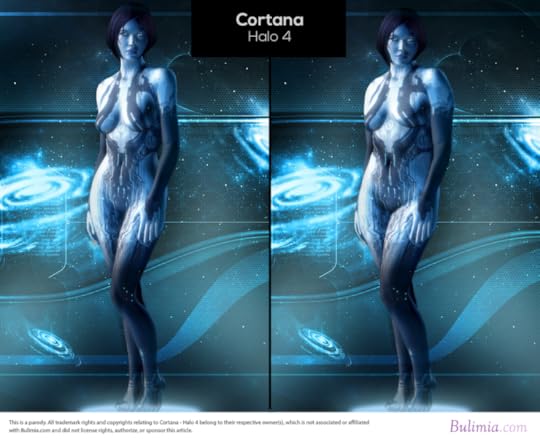
Finally, Bulimia.com delivers a sobering public service announcement, reminding its readers that, "if you are concerned that compulsive and maladaptive eating behaviors are negatively impacting your life, or know someone close to you who might be struggling with an eating disorder, help is available. Call Bulimia.com’s toll-free line, at 1-888-994-4036 for more information on eating disorder treatment – get started on the path to recovery and reclaimed health."
You can read the full post and see the full range of redesigns here.
Road to Gehenna is the harrowing of an online hell
It’s the New Testament to The Talos Principle’s Old Testament.
Kill Screen Magazine's Blog
- Kill Screen Magazine's profile
- 4 followers



